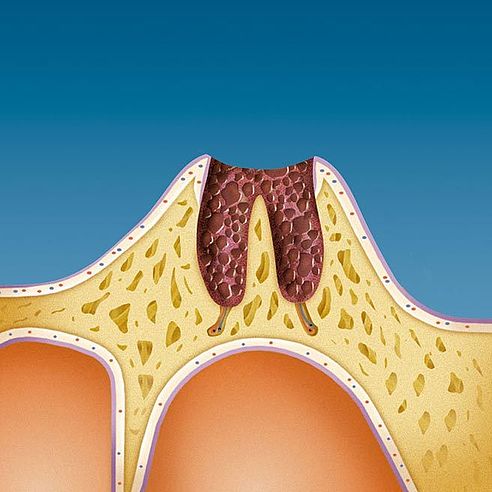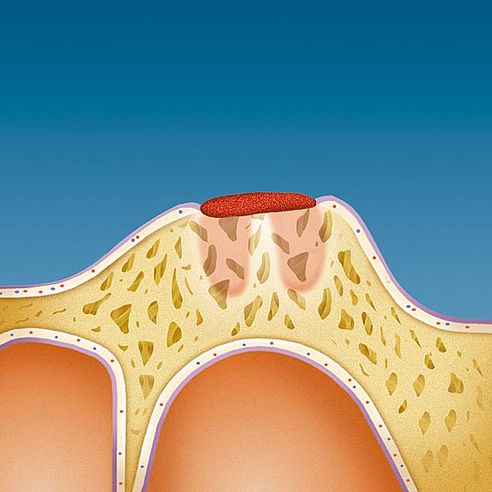
An analysis of all men and women aged 60 and over shows: every third is wearer of a partial or complete denture as a result of caries, periodontosis or accidental injuries, which are the main reasons for loss of teeth.

Thanks to modern denture technology, all of them are able to hide away their deficit. And day by day, they are concerned that nobody realises that they are denture wearers.
In the following, the Protefix Research Department wants to help you to understand what happens after the extraction of the teeth. As well as to give answers to important questions about the topic "dentures". Furthermore, you will find a lot of useful hints and tips on learning to live with dentures.
Results of the loss of teeth


The result of the loss of a tooth is a deep wound in your jaw that has to regenerate and close. The nature helps by forming a clot of blood in the wound that is interspersed with connective tissue and transformed into bone.
After one to two weeks, the wound is covered by a protective mucous membrane. Connective tissue forms a network within the blood clot.
This bone-formation process (ossification) of the previous wound takes approx. two to four weeks. During this process, so-called pecten (a comb-like membrane) forms as a protective layer. The important aspect is that trough the loss of teeth the jaw forfeiting its originally robust structure.
A gradual process of bone degeneration begin. The ridge of the jaw becomes lower and undergoes a strong change of its previous form. This process extends over several years, but at different speeds in the upper and lower jaw.
This process also results in unavoidable changes in the mucosa. The connective tissue becomes thinner and more susceptible to mechanical irritations and pressure spots. The mucosa tends increasingly to bleeding.











